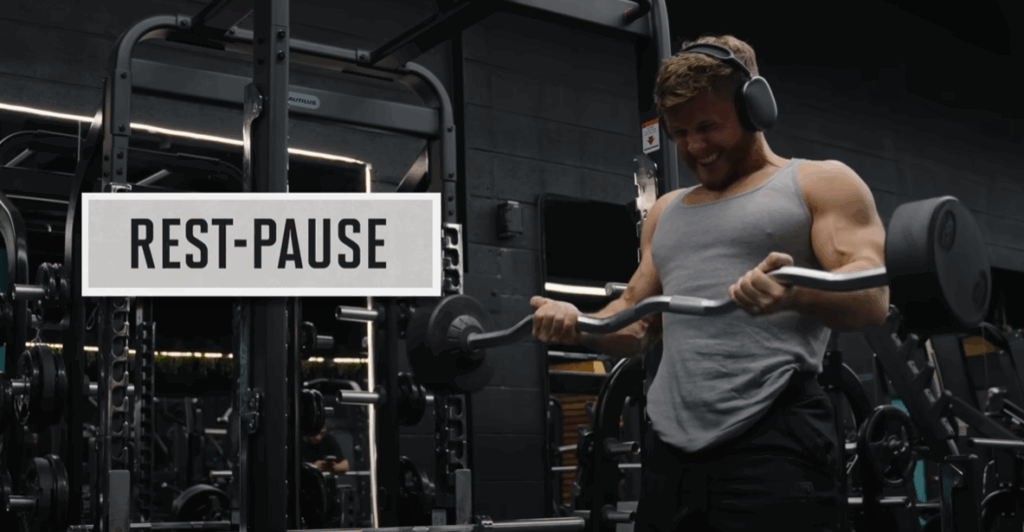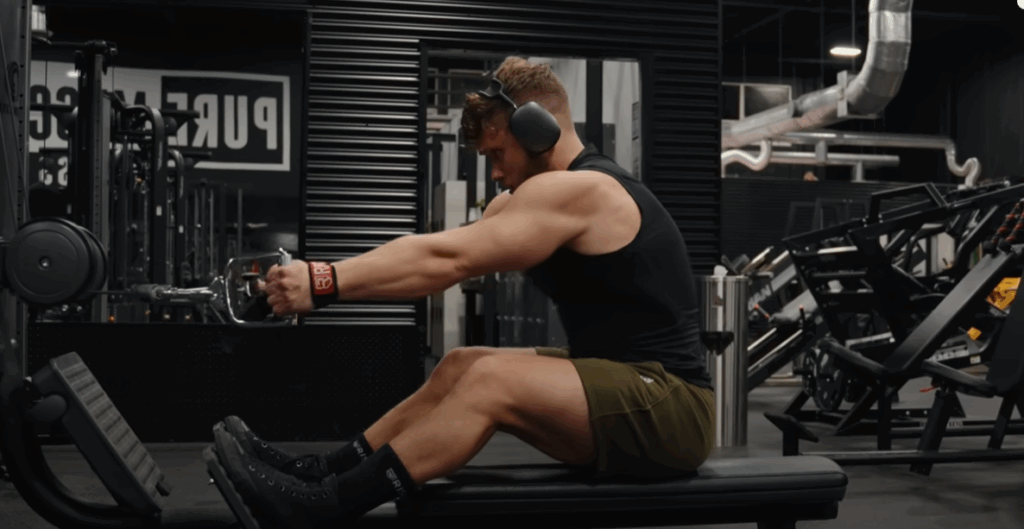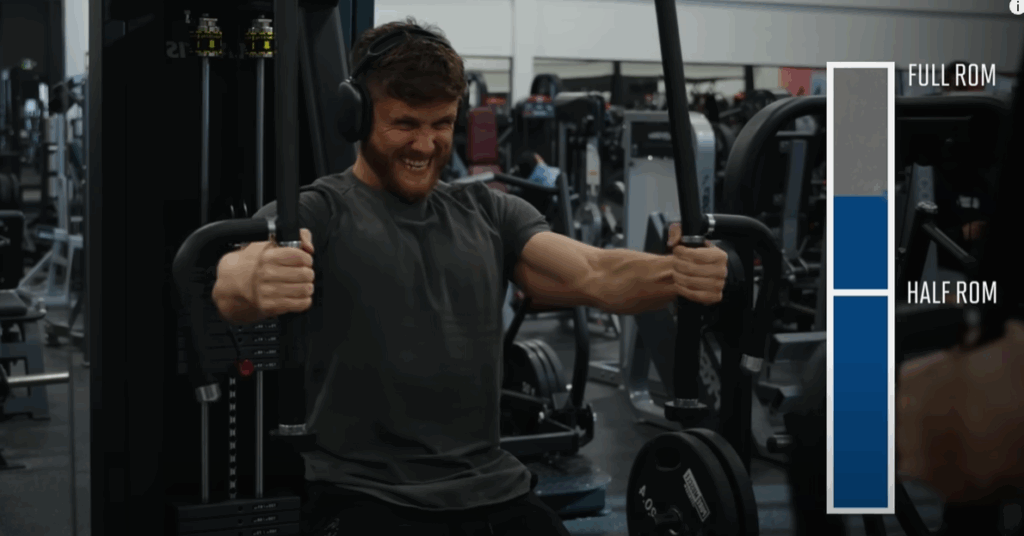Long-Length Partials: The Surprising Technique Backed by Science for Muscle Growth
In the world of strength training, intensity techniques come in all shapes and sizes—drop sets, super sets, cheat reps, rest-pause sets—but one method is quietly gaining recognition as perhaps the most effective of them all: long-length partials.
Unlike other training methods that come and go with fitness trends, this technique is supported by a growing body of scientific evidence. And in many cases, it may even outperform the tried-and-true full range of motion approach. Let’s dive into what long-length partials are, why they’re effective, and how to implement them for serious gains.

What Are Long-Length Partials?
Long-length partials involve performing a movement through only the stretched portion of the exercise’s range of motion. Instead of completing the full lift from start to finish, you stop at around halfway through the motion—but only in the part where the muscle is most lengthened, or stretched.
Take the bicep curl, for example. A standard full rep would start from a fully extended elbow and end with the dumbbell near your shoulder. But with long-length partials, you perform only the lower half of the movement—staying in that stretch-heavy zone near the bottom, never bringing the dumbbell to the top.
Why does this matter? Because muscles appear to grow more when trained under stretch, and long-length partials spend all of their time in that sweet spot.
Scientific Support for the Technique
While the full range of motion (ROM) has long been considered the gold standard, recent studies have challenged that notion. Researchers have compared long-length partials to both short-length partials and full ROM training—and the results are eye-opening:
- 7 out of 8 studies found superior muscle growth with long-length partials over short-length ones.
- In head-to-head comparisons with full range of motion, 4 out of 5 studies favored long-length partials for hypertrophy.
- Even in the one study that found no difference, the long-length group used only 10% of the ROM—and still grew as much as the full ROM group.
What this shows is that training in the stretched portion of a lift might not just be “good enough”—it might actually be better for building muscle.
Why the Stretch Phase Matters
Stretch-mediated hypertrophy isn’t a new concept. Animal studies have demonstrated enormous muscle growth in limbs that were stretched under load. In humans, resistance training that emphasizes long muscle lengths has consistently led to impressive results.
The underlying mechanism is likely mechanical tension—when muscles are under stretch, they produce more tension, which drives adaptation. Long-length partials take advantage of this by spending the entire rep range in the tension-rich zone.

How to Use Long-Length Partials in Your Workouts
There are two primary ways to implement this technique:
1. As a Finisher at the End of a Set
Once you reach failure in a set with full ROM, instead of stopping, keep going using long-length partials. For example, during a pull-down, once you can no longer bring the bar to your chest, continue with short reps in the stretched top portion of the movement.
This method is especially useful for:
- Back exercises (rows, pull-ups, pull-downs)
- Hamstring movements (leg curls)
- Pressing work (when fatigue prevents full lockout)
By doing this, you can squeeze out 3–6 more productive reps that continue to stimulate muscle fibers, especially the ones not fully fatigued by the full ROM work.
2. As a Primary Training Strategy
Another approach is to use long-length partials for the entire set, not just at the end. This involves intentionally restricting the range of motion from the start and staying only in the lengthened phase.
This method is ideal for:
- Machine-based exercises like chest-supported rows
- Leg presses
- Smith machine presses
- Dumbbell flyes, where the bottom half already carries more resistance
By starting and ending each rep in the stretch zone, you accumulate more hypertrophic stimulus from the first rep to the last.

Practical Examples
Here are a few ways to start using long-length partials in your own routine:
- Hamstring curls: After full ROM failure, keep doing the bottom half of the rep where the hamstring is most stretched.
- Lat pulldowns: Focus on the upper half of the range where arms are overhead and the lats are stretched.
- Dumbbell flyes: Skip the top and only perform the bottom half of the motion for a deep stretch.
- Leg press: Lower the sled into a deep stretch and only come up halfway.
You might need to increase the weight slightly, since you’re working within the strongest range. But be cautious and prioritize form over load.
Common Mistakes to Avoid
- Sloppy Form: Just because you’re doing partial reps doesn’t mean form should go out the window. Each partial rep should be deliberate, controlled, and tension-focused.
- Too Much Range: Some people mistakenly perform 80–90% of the movement and call it a partial. True long-length partials are closer to 50% or less of the full range.
- Overdoing It: Using this technique for every set can lead to fatigue, joint stress, or recovery issues. Use it selectively—usually on the last set of an exercise or for specific muscle groups like the hamstrings, lats, or pecs.
- Neglecting Shortened Position Exercises: Despite the hype, long-length partials aren’t a reason to abandon movements that target the fully contracted (shortened) position—like tricep kickbacks or cable crossovers. A complete program still benefits from a variety of angles and tensions.
Integrated Partials: A Hybrid Approach
If you’re not ready to commit fully to long-length partials, consider a hybrid strategy called integrated partials. Alternate between full reps and partials during the same set. For example, one full pec deck rep, followed by one partial, and so on.
This gives you the benefits of both techniques while keeping your training dynamic and engaging.
Final Thoughts: Should You Train with Long-Length Partials?
Long-length partials aren’t a gimmick—they’re a research-backed method to make your training more efficient and hypertrophy-focused. While they shouldn’t replace full ROM movements entirely, they deserve a place in a well-rounded routine.
If you’re chasing muscle growth and looking to optimize your time in the gym, implementing this technique—even in small doses—can provide noticeable results. Whether used as a finisher or a dedicated strategy, long-length partials let you train smarter, stimulate harder, and build more.
So the next time you feel like your progress has stalled, don’t just lift heavier—train deeper.



